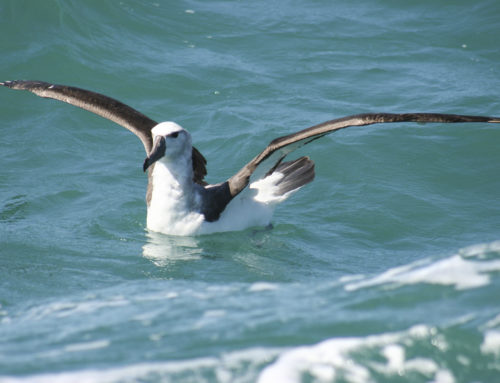BRYDES WHALE SAMPLING AT PRINGLE BAY
September 25, 2010 by dyertrust
Monday morning the 12th of July, turned out to be like all other days here at DICTfull of great surprises and excitement. We received a phone call from Penelope Aplon, Environmental Manager of the Overstrand Municipality, about a dead washed up whale at Pringle Bay beach.Wilfred Chivelland I grabbed our rubber boots, stranding kit and oil-skins and within 10 minutes we were on the road heading to Pringle Bay.

If the animal is fresh, we can obtain a lot more information and conduct a necropsy, where we can take stomach samples and investigate if the animal had any parasites in the lungs or intestines etc, and any scars on the skin will indicate if the animal has been entangled in fishing gear or hit by ship propellers. These samples can help us to better understand the live animals and thereby help us to protect them.

A very interesting thing was the cleary defined postmortumsharkbites on the whales blubber. It was clear that the it was sharks and not killer whales, because killer whales would rip the flesh and most likely have eaten the tounge as well. The shark bites were confined at the edge and did not to through to the flesh.
We decided not to indulge ourselves in a major dissection, due to the condition of the animal. We took a big sample of the blubber and the baleensas well as measurements of the fluke and lots of pictures. Blubber has been divided in two pieces and frozen. The samples will be handed over to Mammal Research Insitute (University of Pretoria) and the government department, Oceans and Coasts. It is seldom possible to ascertain the cause of death and this instance was no different.
The carcass will be removed by the municipality, so as not to pose a problem to the public, however leaving a carcass like that can be a rich source of nutrients for other animals.
Katja Vinding Petersen (M.Sc)




